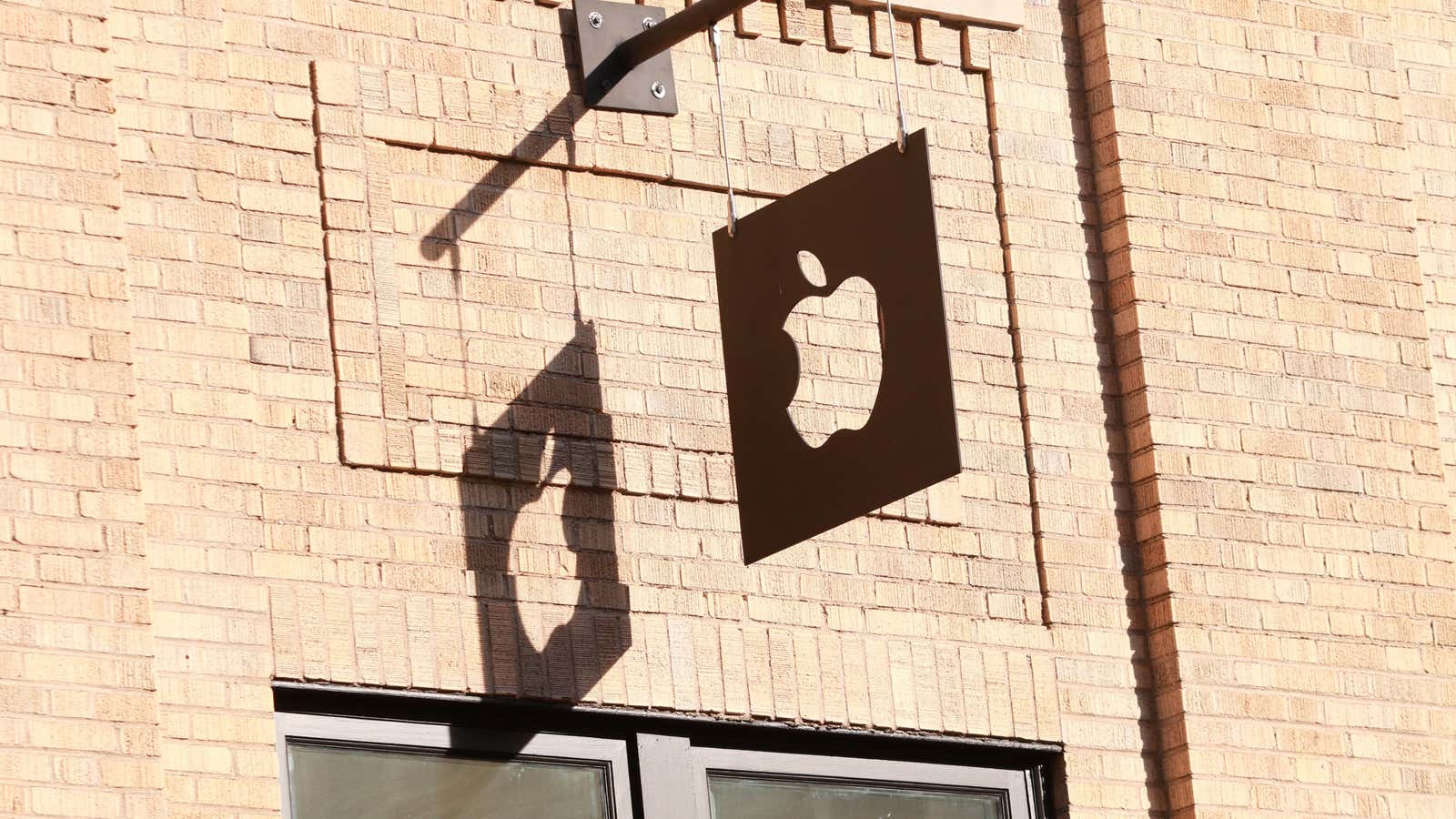Well, it could’ve been much worse.
Apple reported its first-quarter earnings (its fiscal year starts in October) today, Jan. 29. Investors and analysts had braced for a tough quarter, after the company announced earlier in the month that it would miss the revenue target it set on last quarter’s earnings call. Apple originally had said it expected to generate between $89 billion and $93 billion in the holiday quarter, but revised its estimate target down to $84 billion—about $4 billion less than it generated in the same quarter in 2017.
The company recorded sales of $84.3 billion in the holiday quarter, slightly higher than its second estimate, but still quite a drop over the same period last year.
Wall Street seemed to be pleased with Apple’s report: Apple’s stock price was trading up about 3% in after hours trading at the time of publication, and has more than recovered since Apple revised guidance on Jan. 2. In a call following the earnings release, Apple said it expects to generate between $55 billion and $59 billion in the second quarter of the year, which would be a drop of about $2 billion from the $61.1 billion it recorded in the same quarter last year.
In a note to investors at the time of the revision, CEO Tim Cook blamed the expected shortfall on weak sales in China, some developed nations, and the company’s discounted battery-replacement program for older iPhones.
Much as Cook foretold, sales in China were especially poor, down over 26% to $13.2 billion from the same quarter last year. Trade tensions with the US, and inherently more affordable domestic devices seem to have swayed more consumers in China this year.
Apple has been giving off warning signs that it had reached a saturation point with the iPhone. First, it said it would no longer report how many units it was shipping. Then, for the first time ever, Apple advertised trade-in discounts on its brand-new phones just weeks after they were released.
Today’s report validated some of those concerns. The company reported $51.9 billion in iPhone sales this quarter, a drop of about 15% from the same period last year. It appears it was not a great holiday season for Apple’s latest devices, which some felt were too similar to last year’s products, but at a higher price.
One of the true bright spots for Apple in recent quarters has been its services business, which includes sales of apps, games, Apple Music and iCloud subscriptions, as well as Apple Pay fees. That business is the size of a Fortune 100 company on its own, and generated $10.8 billion this quarter, a jump of 19% over the same period last year.
For the first time, Apple reported the margin on its services business: a massive 62.2%.
Although services are growing steadily, they’re unlikely to become the sort of revenue-generating behemoth that the iPhone has been. That being said, reports out today suggest that Apple is readying its new streaming service (and possibly a gaming service), which is supposed to feature a range of original content, as well as popular streaming services like HBO and NBA League Pass, exclusive to Apple devices. But it’s pretty late to the streaming game and already faces stiff competition from Netflix, Amazon and Hulu. Apple’s service might not even be all it’s cracked up to be.
But Apple’s other hardware businesses have been chugging along. Sales for both Mac computers and iPads were up over the same period last year, although the iPhone still accounted for about 61% of the company’s total revenue for the quarter.
Apple has also recategorized its smallest business line, which it previously called “Other products
and contains sales of the Apple Watch, AirPods, Beats headphones, and other accessories. It’s now calling the business “Wearables, Home and Accessories,” and it generated $7.3 billion for the quarter, up a full third from a year earlier.
